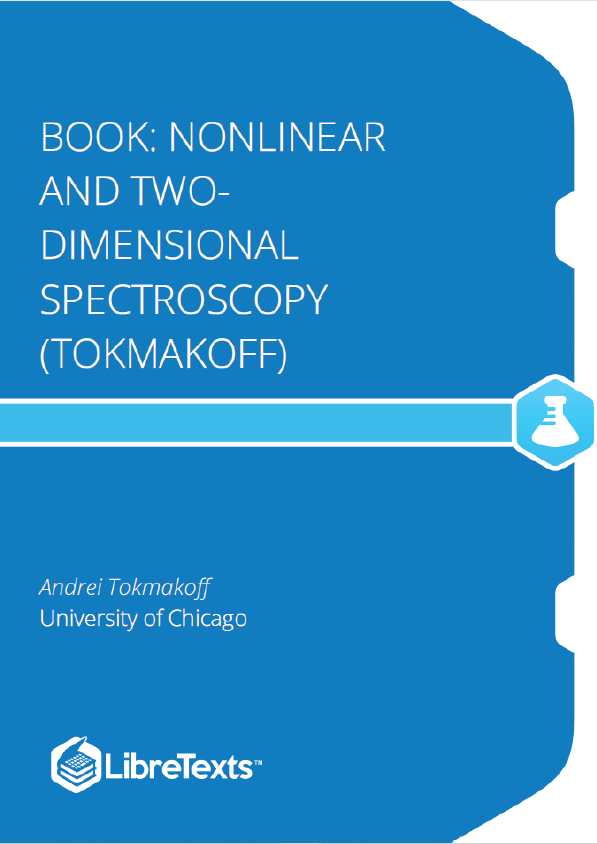1: Coherent Spectroscopy and the Nonlinear Polarization
We will specifically be dealing with the description of coherent nonlinear spectroscopy, which is the term used to describe the case where one or more input fields coherently act on the dipoles of the sample to generate a macroscopic oscillating polarization. This polarization acts as a source to radiate a signal that we detect in a well-defined direction. This class includes experiments such as pump-probes, transient gratings, photon echoes, and coherent Raman methods. However understanding these experiments allows one to rather quickly generalize to other techniques.
Spontaneous and coherent signals are both emitted from all samples, however, the relative amplitude of the two depend on the time-scale of dephasing within the sample. For electronic transitions in which dephasing is typically much faster than the radiative lifetime, spontaneous emission is the dominant emission process. For the case of vibrational transitions where non-radiative relaxation is typically a picoseconds process and radiative relaxation is a μs or longer process, spontaneous emission is not observed. The description of coherent nonlinear spectroscopies is rooted in the calculation of the polarization, P . The polarization is a macroscopic collective dipole moment per unit volume, and for a molecular system is expressed as a sum over the displacement of all charges for all molecules being interrogated by the light.
Absorption is the simplest example of a coherent spectroscopy. In the semi-classical picture, the polarization induced by the electromagnetic field radiates a signal field that is out-of-phase with the transmitted light. To describe this, all of the relevant information is in or . Let’s begin with a frequency-domain description of the absorption spectrum, which we previously found was proportional to the imaginary part of the susceptibility, . We consider one monochromatic field incident on the sample that resonantly drives dipoles in the sample to create a polarization, which subsequently re-radiate a signal field (free induction decay). For one input field, the energy and momentum conservation conditions dictate that and , that is a signal field of the same frequency propagates in the direction of the transmitted excitation field.
1.1: Linear Absorption Spectroscopy is shared under a CC BY-NC-SA 4.0 license and was authored, remixed, and/or curated by Andrei Tokmakoff via source content that was edited to conform to the style and standards of the LibreTexts platform; a detailed edit history is available upon request.











